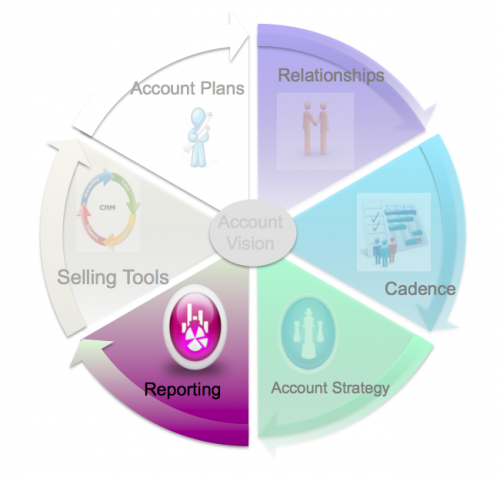Mastering Sales Reporting: Essential Metrics, KPIs, and Reporting Cadence for Business Success
The Importance of Sales Reporting in Driving Business Success
A good friend of mine once told me that in business, “we’re the blunt end of the stick” and nowhere is this more true than sales. Sales is the tip of the spear when it comes to a company’s revenue, it’s the vital connection between a business and it’s customers. Salespeople are responsible for developing and maintaining customer relationships and they have access to a wealth of information about the company’s operations and market trends.
Without a strong sales team, even the most innovative and well-run companies can get stuck in the mud. Because of this, sales reporting is absolutely essential, providing the critical link between sales performance and overall business success.
Knowing this, sales owes it to the organization and to themselves to deliver clear and concise reports that provide meaningful insights into the state of the business. These reports must be easy to understand and actionable, providing decision-makers with the information they need to drive growth. Effective sales reporting is not just a nice-to-have, it is an essential practice.

Basic Metrics for Every Sales Team
While every company has its own unique sales environments, there are some basic metrics that should be tracked across the board. The baseline sales data that every sales team should be collecting includes information about the sales funnel / pipeline, closed business and revenue. Amazingly, not all companies are tracking this information which is detrimental to their bottom line. It’s important to note that there is not one-size-fits all approach when it comes to sales reporting. Different organizations will have different reporting needs based on their unique circumstances. Beyond this baseline data, each and every salesperson should have their own set of metrics and reporting.
Beyond the Baseline: Developing a Comprehensive Reporting Structure
To build a comprehensive reporting structure, sales organizations need to think beyond the standards. While revenue, profit, gross margin, and funnel are important, they only scratch the surface of what can be measured. Sales teams should be asking themselves: what other data points can help us understand our performance and identify areas for improvement? This is where good KPIs come into play. Good account governance involves tracking KPIs specific to each account. KPIs help sales teams identify potential ricks early on, allowing them to take corrective action before it’s too late.
KPI’s I’ve found valuable in the past:
Wallet-Share
Forecast/Outlook
Key Programs
Competitive Wins
New Product Wins
Losses
Product % of revenue (what % of revenue comes from what products)
Key Deals
Dependencies (things the sales team depends on to make or close a deal that another functional group is responsible for)
Linearity (the consistency of sales, does sales come in evenly or in major swings?)
Forecast accuracy (does the team actually meet their stated forecast goals, what is the % of forecast accuracy?)
Net New Customers
Lost Customers
Upgrades
Customer Satisfaction
Demo’s
Dashboards for Sales Reporting
The key takeaway: when it comes to sales reporting, it’s crucial to pinpoint the essential elements of your sales environments and business and effectively report on them. Developing a dashboard that present a clear snapshot of your sales progress is necessary for both management and account-level reporting. The best-performing account managers I have encountered create their dashboards and KPIs to serve as a benchmark and guide for progress tracking. This approach enables proactive management, giving management and account managers the ability to see where they are going and address issues that arise.
The Power of Quarterly Business Reviews
In addition to a dashboard and KPI’s, there is an internal reporting cadence that is a must have. It’s the quarterly business review or account review. To me there is only one way to execute a QBR. Each member of the team has 3 hours each quarter to update the entire team on what they said they would do, what they did, what they didn’t do, what they learned and what they will do next quarter. This approach to quarterly business/account review drives tremendous accountability into the process.
Traditionally, QBR’s waste everyone’s time while the presenters regurgitate the same old information of what they did, regardless of whether or not it’s what they said they were going to do, they avoid calling out failures, or missteps, they don’t address what they will do moving forward etc. Traditional QBR’s lack accountability. I make them as simple and straight forward as possible. We only address what it is we said we were going to do, what were our goals and objectives, did we make them or not. Why?
Where does that leave us? Can we make up the losses? If so, how? What are we going to do different? How do we know that’s going to work? What are next quarters goals and objectives? etc. The QBR’s are solely focused around the goals, initiatives, and tactics committed to at the beginning of the quarter.
Reporting is two things, what is being reported, the information and how it’s being reported, the cadence. Successful sales teams and account teams pick the right things to measure and have an internal reporting cadence of accountability. It’s that simple.
If you or your organization want to start being problem-centric sellers, click here to schedule a call with our sales team.




0 Comments